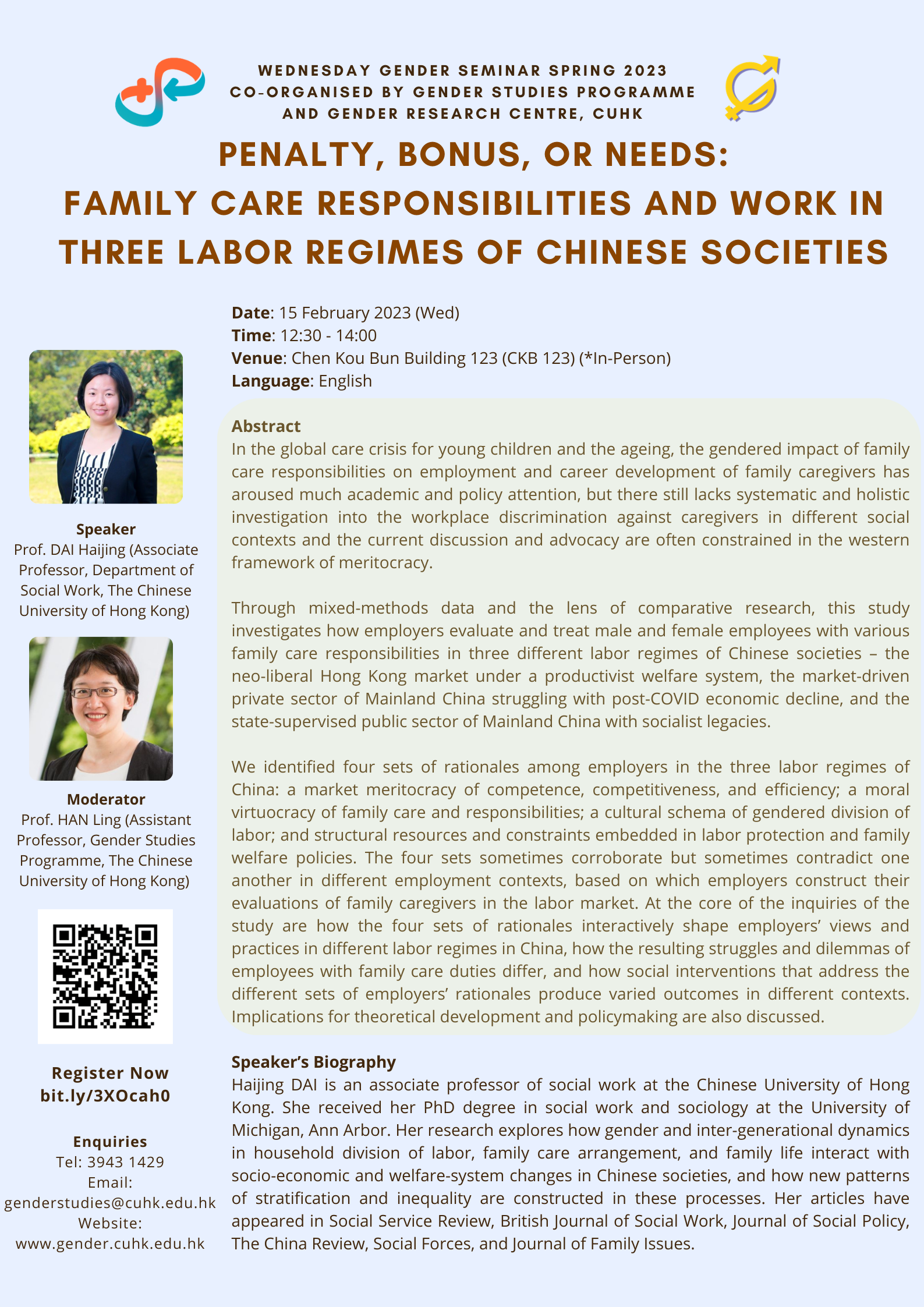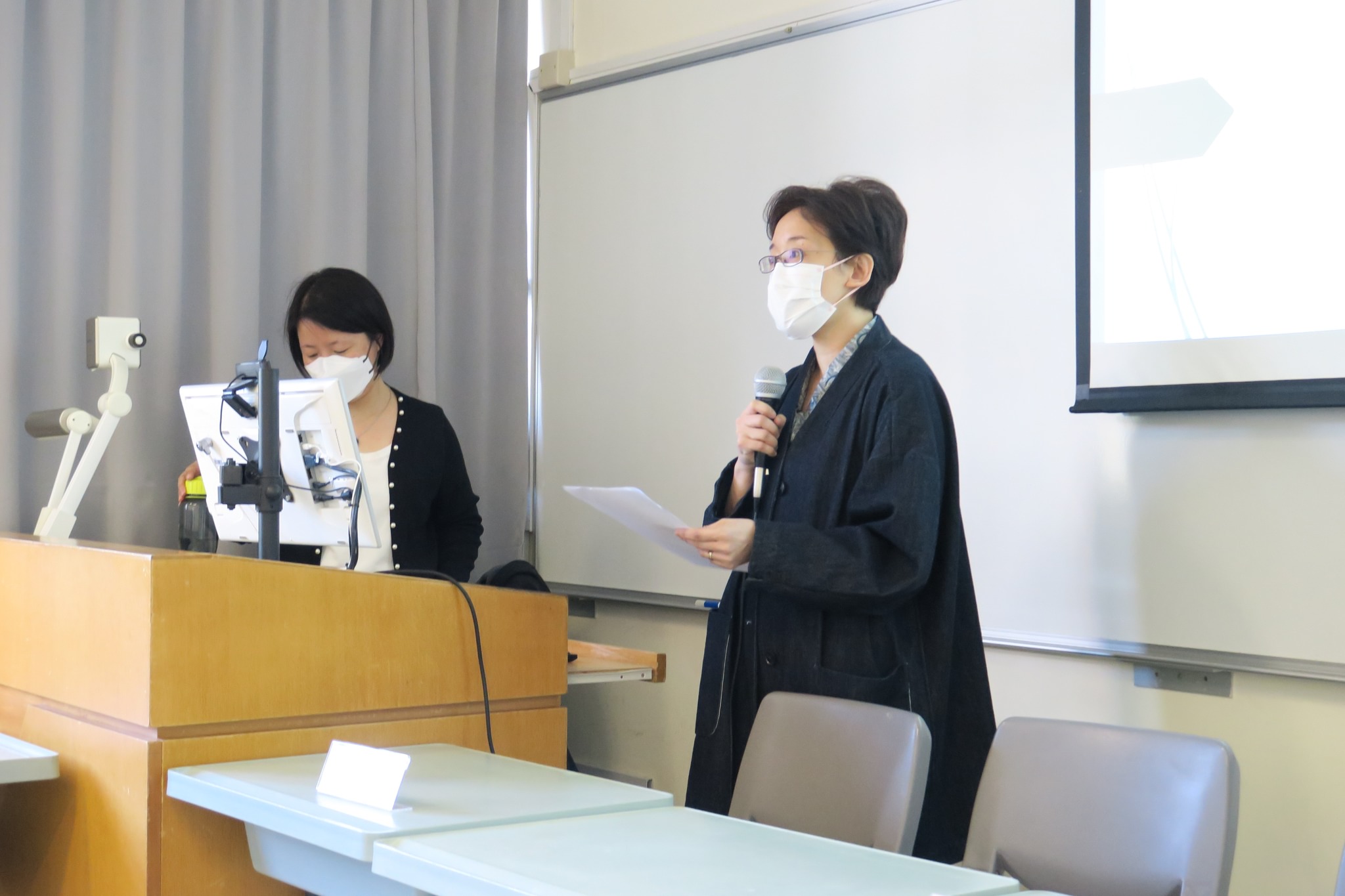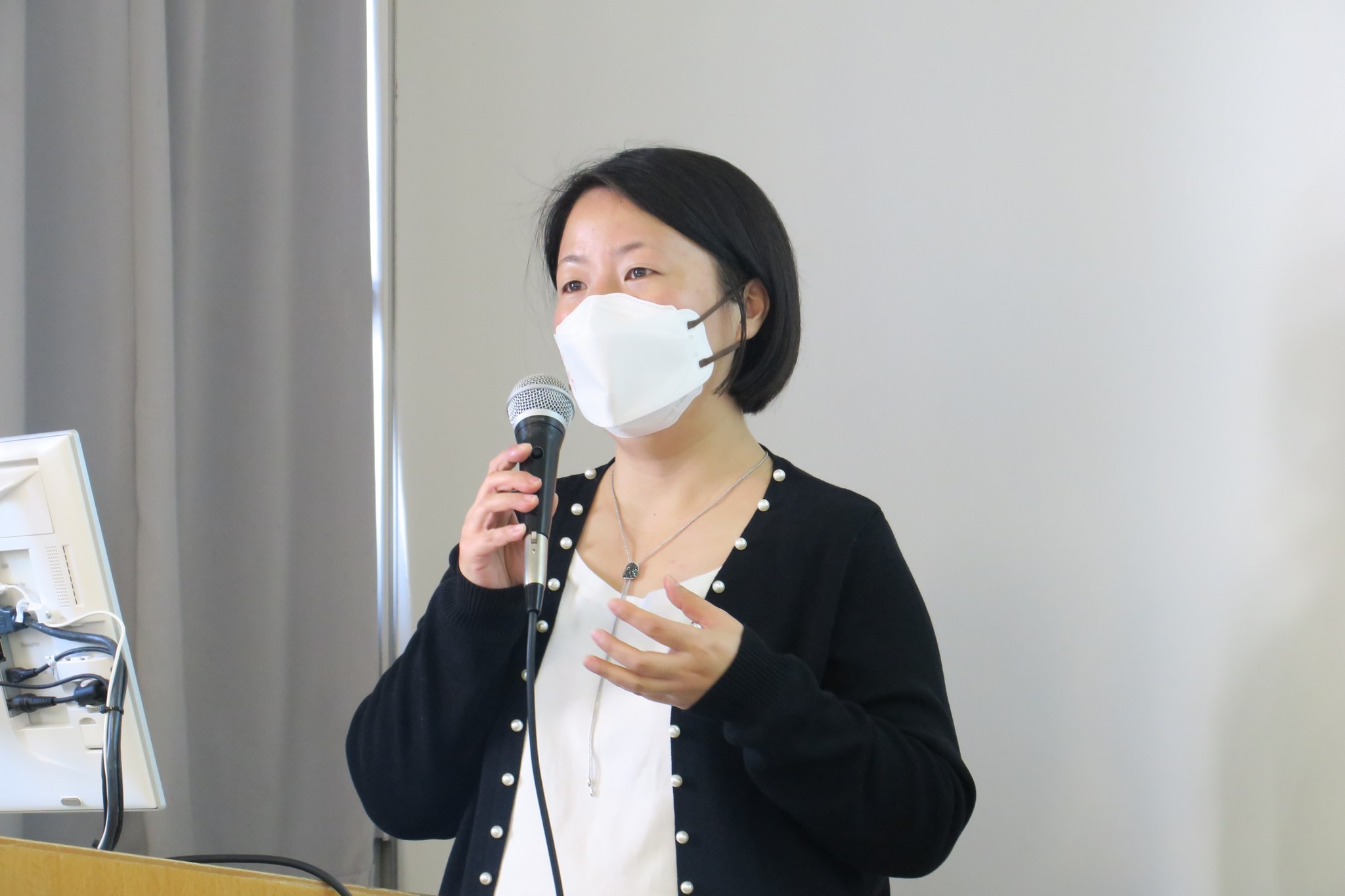his mixed method research conducted by Prof Dai and her team investigates and compares the employers’ perspectives via female and male employees with various family responsibilities in three different labor market regimes (Hong Kong’s labor market, Shen Zhen’s private sector, and Shen Zhen’s public sector). While multiple researchers have argued that caregivers are uncompetitive in market meritocracy, this research has shed light on how the situation actually differs in three cultural environments and market regimes. In addition, this research has put on a gendered lens on caregivers’ struggles in the labor market, particularly female employees who suffered from the traditional norms.
Firstly, it is found that employers in Hong Kong hold quite a few particular cultural stereotypes when evaluating family caregivers. Family virtuocracy is considered a significant advantage for both males and females. Despite this caregiver bonus, mothers will suffer from motherhood penalty when it comes to childcare as opposed to elder care. It’s evident that the labor market structure is still in compliance with gender norms. Secondly, the data from Shenzhen’s private sector has proved the dominance of market meritocracy. Under this circumstance, the fatherhood penalty is also prevailing, and filial piety is not recognized as a bonus in the private sector. Employers consider work-family negotiation and balance an extremely private problem that employees have to address by themselves. Finally, Shenzhen’s public sector, where market meritocracy power has been lashed, shows respect for employees’ needs. This specific pattern with Chinese characteristics, however, creates a new dimension of inequality, such as outsourcing without guarantee, invisible discrimination against single women, and inward exploitation for the good of the community.
In conclusion, the three various patterns demonstrate that the factors and norms influencing employers to evaluate family caregivers are multifaceted in addition to meritocracy. It is also noticeable that gender norms existed in all three different labor market regimes. Although there are now only preliminary data analyses and conclusions at this stage, it is expected to see further research development as well as core findings in the final article.
Written by: ZHANG Xunyue





A
A
A
Contact Us